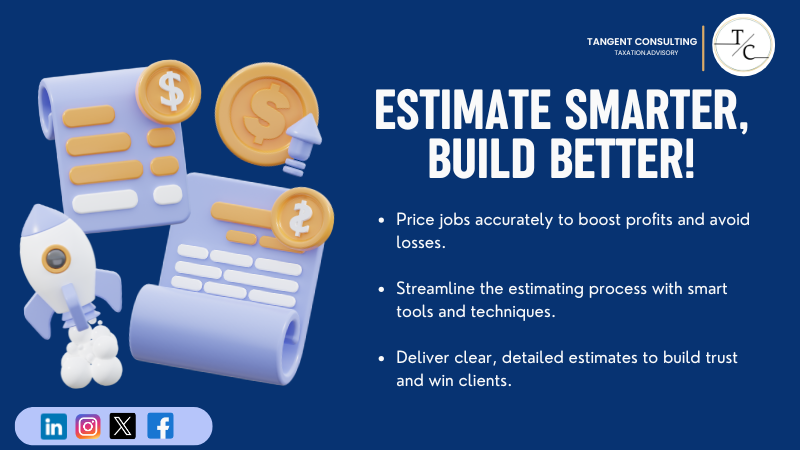How To Estimate a Remodeling Job? Read These 5 Tips
How To Estimate a Remodeling Job? Read These 5 Tips

We just had breakfast, and we thought we could kill Tuesday morning. How wrong we were!
Earlier, we were in the kitchen preparing our breakfast while replying to client emails. Before we knew it, the toast was burnt, and the smell spread across the kitchen. Not Good!
The same scenario applies to remodeling estimates. If you start a project without proper estimates, your toast (we mean the bottom line) could get burnt.
So, in this guide, we’ll break down how to estimate a remodeling job with five simple steps.
Let’s dive in!

What are Remodeling Estimates?
Remodeling estimates are an important part of your financial planning. They illustrate the expected costs involved in a project and break down the bigger picture into manageable pieces.
For contractors, they provide a roadmap to manage resources effectively and avoid any surprises. For homeowners, they set clear expectations so the project stays on track financially.
If you are not using an accurate remodeling estimate, you can overlook expenses like waste disposal, unexpected issues, and specific client requests.
In short, remodeling estimates serve as a bridge between you and homeowners. So both parties can stay headache-free during the entire project.

5 Tips on How to Estimate a Remodeling Job
Houzz’s survey showed that only 36% of homeowners hit their budgets in 2019, 31% exceeded their budgets, and 29% didn’t set a budget at all.
You can imagine the stress for contractors and clients if expectations and costs don’t match up.
But it doesn’t have to be this way. With the right approach, you can avoid budget blowouts. So, here are the 5 tips on how to estimate a remodeling job.
1. Check Previous Estimates
When it comes to estimates, previous projects can help you a lot. When you analyze estimates from similar jobs you’ve completed, you can develop a strong preliminary figure to share with your potential client.
Previous estimates help you in two ways:
1. It gives you a solid starting point.
2. It lets you decide if the project is worth pursuing.
It’s important to note that you don’t have to go through every previous project. If your previous project is limited to smaller jobs, you can’t compare it with larger projects. This is because your size, scope, and work type can influence the overall costs.
If you are beginning your journey as a contractor, estimating software can be a game-changer. Many tools like Jobber can simplify the process and offer free home improvement cost calculators to give you a general idea of expenses.

2. Calculate Material Costs
When you start any project, you need to list all the materials required. Here, it’s not about creating the list. You need to accurately calculate how much material you’ll require.
We know this can be complicated; however, one of the simplest ways to calculate material accurately is to use a building materials calculator. The calculator can provide reliable estimates based on the required materials and quantities.
Additionally, contractor apps for cost estimation can make your life a lot easier. These apps calculate the material you require and factor in variations like material type and density. This can help you save time and avoid over- or underestimating resources.
3. Calculate Labor Costs
We have calculated material costs but need to calculate labor costs to come up with an accurate estimate. Let’s debunk one myth here: It doesn’t matter if you are a one-man show or have employees; you need to calculate the overall cost. Hey, your time is valuable!
If you have employees, you need to make sure all labor costs are included in hourly rates. However, there’s more to labor costs than just wages. Additional expenses like workers’ compensation, benefits, bonuses, insurance, vehicles, and work-related tools can significantly increase the hourly cost. For instance, if an employee’s hourly is $20, these extra expenses could push your actual cost to $35 per hour.
The good news is that labor cost calculators can simplify this process. When you calculate these costs upfront, you can avoid unexpected expenses and ensure your estimate reflects the true value of your work.

4. Estimate Time Required
An accurate remodeling estimate also depends on the length of the job. Underestimating the hours needed can reduce your profit margins. So, you need to divide the time between small, medium, and large projects.
For smaller tasks, like repairing a leaky faucet, you’re generally looking at 1 to 2 hours of work. Medium-sized projects, such as replacing windows or installing doors, usually take 2 to 4 hours. When it comes to large-scale jobs like plumbing or electrical work, you often need at least 4 hours and sometimes several days.
Accurately estimating the time required helps you set realistic expectations for your client and ensures you’re adequately compensated for every hour of effort.
5. Add Your Markup
Material, labor, and time are important in determining the right estimate. However, to cover overall costs, you also need to be wary of hidden expenses.
Some of these common expenses are:
- Monthly living expenses
- Tools and equipment
- Advertising and marketing
- Vehicle mileage and maintenance
- Phone and internet bills
- Licensing and certification fees
- Taxes
Your hourly rate must absorb these costs and leave room for a healthy profit. A general rule of thumb is to aim for a profit margin of around 35%, which can cushion unexpected expenses.
If meeting this margin feels challenging, consider reducing overhead costs where possible. Something as simple as negotiating better rates for your phone or internet services can make a difference.
Small tweaks in cost management can significantly impact your bottom line, giving you the flexibility to adjust for unforeseen circumstances.

Bonus Tips for Accurate Estimates
We are feeling a bit generous today, so we thought, why not give some extra tips to help readers? Here are some additional tips to help you estimate accurately:
Focus on Client Satisfaction
Client satisfaction is the lifeblood of any remodeling business. They come back for more and may recommend your services to friends and family. To keep them coming back, you need to practice active listening. You need to know about their needs and preferences.
Provide details that address their concerns and clearly mention potential challenges that could impact the budget. Transparency is key here; no one likes surprises when it comes to money. Involving homeowners in the planning and presale process builds trust and gives them confidence in your ability to deliver. A satisfied client isn’t just a win for the project; it’s a win for your reputation.
Document Estimates Thoroughly
If you haven’t heard about the concept of safety nets, you are missing out. One of the best ways to have a safety net is to create a well-documented estimate.
By providing a detailed breakdown of the project, you show your clients that you’ve put time and thought into their remodeling needs. This level of professionalism builds trust and makes your clients feel valued.
In addition, thorough documentation serves as a safeguard against misunderstandings or disputes down the road.
Final Thoughts
So, there you have it! Unlike our breakfast toast, we hope you got some value. With these tips in your toolkit, you can provide accurate estimates and ensure costs are not affecting your profits.
It’s important to always leave a little room for unexpected surprises, as remodeling can get messy.
Speaking of messy, are your financials untidy? It’s time to sort them out and boost your cash flow. We have years of experience as a business coach, CFO, and tax consultant. With us, you don’t need to hire an accountant or business coach separately; you can get both in one place.
P.S. If you are reading this, it means you can have access to our free consultation for your business. Avail this for free today before we change our mind 😉
FAQs
Why is estimating important in construction?
Estimating ensures projects are planned within budget and prevents unexpected costs. Accurate estimates also build client trust and set clear expectations for the project.
How to estimate labor hours on construction projects?
To estimate labor hours, break down the project into tasks, assign time estimates for each based on experience or industry standards, and account for factors like skill level and complexity.
How much over an estimate can a contractor go?
Contractors can typically go 10-15% over an estimate. However, it’s essential to communicate changes with the client.
